A pest known as the emerald ash borer could kill most ash trees in Oak Ridge, and the cost to treat or remove the trees that pose a threat to the city’s electric system has been estimated at $662,000, officials said.
The emerald ash borer (EAB), Agrilus planipennis Fairmaire, is an exotic beetle that was discovered in southeastern Michigan near Detroit in the summer of 2002. The adult beetles nibble on ash foliage but cause little damage. The larvae (the immature stage) feed on the inner bark of ash trees, disrupting the tree’s ability to transport water and nutrients.
The City of Oak Ridge said in May that ash trees in Oak Ridge are dead or dying due to the emerald ash borer. Once compromised by the beetle, the city said then, the trees pose a significant hazard to people, property, and power lines.
“The impact of this pest is extreme,” Oak Ridge Electric Director Jack L. Suggs said in a June 27 memo to City Manager Mark Watson. “We expect virtually 100 percent death of all ash trees in the city, with only trees receiving ongoing chemical treatment surviving. Many of these trees will impact our power lines, in addition to other public facilities such as parks and streets.”
A survey of the city’s electric power lines with help from University of Tennessee forestry interns this summer is evaluating the health of the trees and the probability that they might affect the electric system. The work is only about one-third complete, but officials estimate there could be about 1,000 to 1,200 trees that will need to be either treated or removed because of their potential to affect the city’s electric system, Suggs said.
“Based on observations so far, 60 percent of the observed trees are showing signs of infection, with 13 percent being in poor or dead condition,” Suggs said.
The city staff estimates that about three crew years will be required to treat or remove the ash trees that could affect the electric system. The cost of that work has been estimated at $662,000. The work would be spread out over two years, for an annual average of about $300,000. That’s about 0.5 percent of the Oak Ridge Electric Department’s roughly $60 million annual budget.
The do-nothing option is worse, Suggs told the Oak Ridge City Council on Monday, before members unanimously approved a two-year right-of-way maintenance contract renewal with Seelbach and Company Inc. that includes the new work on ash trees.
It’s not clear what the cost might be to treat or remove other ash trees that could threaten other city facilities, such as those operated by the Oak Ridge Recreation and Parks Department or Oak Ridge Public Works Department.
In May, the city said many ash trees in Oak Ridge are already dead or damaged beyond the point where they can be saved. The emerald ash borer was accidentally introduced to the U.S. about 15 years ago, the city said. It probably arrived in the United States on solid wood packing material carried in cargo ships or airplanes originating in its native Asia, according to the Emerald Ash Borer Information Network.
“Since then, they have destroyed millions of trees on a scale not seen since the chestnut blight,” the city said in May. In one study, the time period between discovery of the first infected ash trees and nearly 100 percent death of those trees was just six years. Infected trees were first found in Anderson County in 2012.
In his memo to Watson, Suggs said healthy trees may be treated on private property with the property owner’s permission when they pose an extreme threat to city infrastructure.
“For trees that are on private property, staff plans to only remove limbs that endanger the public infrastructure unless removing them would result in an unstable tree that would potentially fall onto structures, in which case we will remove up to the entire tree if required for safety reasons,” Suggs said.
The estimated cost of treating or removing the ash trees is included in a two-year renewal of a right-of-way maintenance contract with Seelbach and Company Inc. of Lawrenceville, Georgia. Work performed under the contract is split into two parts. There is zone work for normal pruning operations and hourly work for application of herbicides, tree removal, emergency tree work, and other work as directed. The cost to renew the zone work for two years, including a Consumer Price Index adjustment, is $644,328.54. The cost to renew the hourly work for two years, including a Consumer Price Index adjustment, is $773,994.45.
The total cost of the two-year contract renewal, including zone work, hourly work, and the ash tree work, is $2,080,322.99.
“Should all of the hourly resources not be required, they will not be used,” Suggs told Watson. “Should estimates fall short of the magnitude of the problem, staff will apprise you of the situation and our recommendations.”
The city has previously recommended that, if you find an ash tree in your yard, you consult a tree professional to find out if your tree can be saved or if it has to be removed. Suggs also strongly advised customers to request qualifications and insurance certificates of any professionals they hire.
The adult emerald ash borer beetle is dark metallic green in color, 1/2 inch-long and 1/8 inch wide. The adult beetles leave a “D”-shaped exit hole in the bark, roughly 1/8 inch in diameter, when they emerge in June.
Since its discovery, according to the Emerald Ash Borer Information Network, the EAB has:
- Killed hundreds of millions of ash trees in North America.
- Caused regulatory agencies and the USDA to enforce quarantines and fines to prevent potentially infested ash trees, logs, or hardwood firewood from moving out of areas where EAB occurs.
- Cost municipalities, property owners, nursery operators, and forest products industries hundreds of millions of dollars.
To learn more about the EAB, visit www.emeraldashborer.info. The website is maintained by several universities and contains important up-to-date information regarding the EAB pest, the press release said.
See the City Council agenda here.
More information will be added as it becomes available.
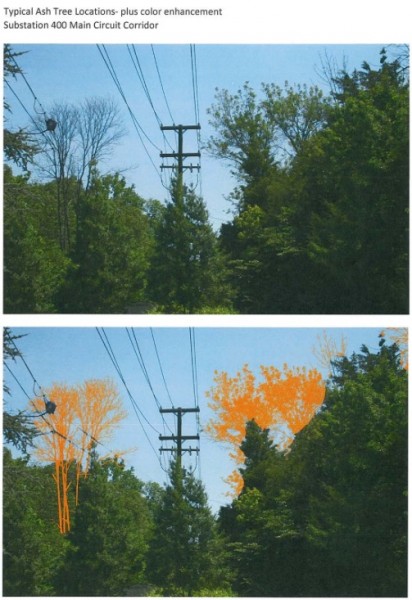
Typical ash tree locations, plus color enhancements—Substation 400 main circuit corridor. (Images by City of Oak Ridge)
Do you appreciate this story or our work in general? If so, please consider a monthly subscription to Oak Ridge Today. See our Subscribe page here. Thank you for reading Oak Ridge Today.
Copyright 2017 Oak Ridge Today. All rights reserved. This material may not be published, broadcast, rewritten, or redistributed.
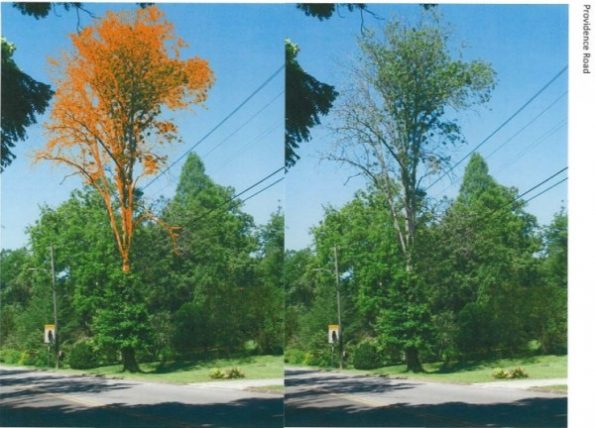
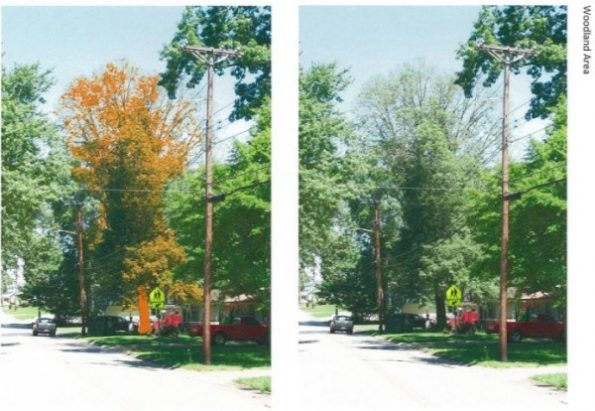
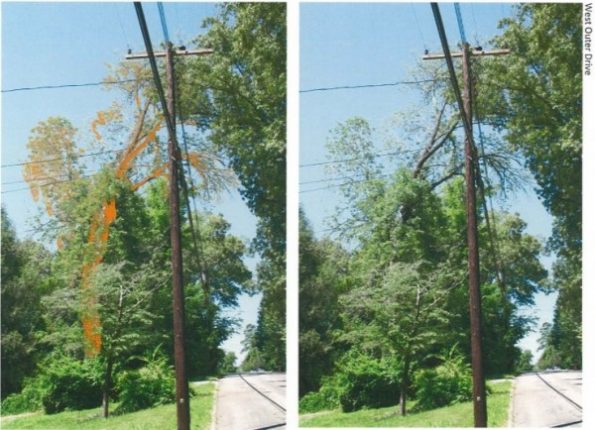
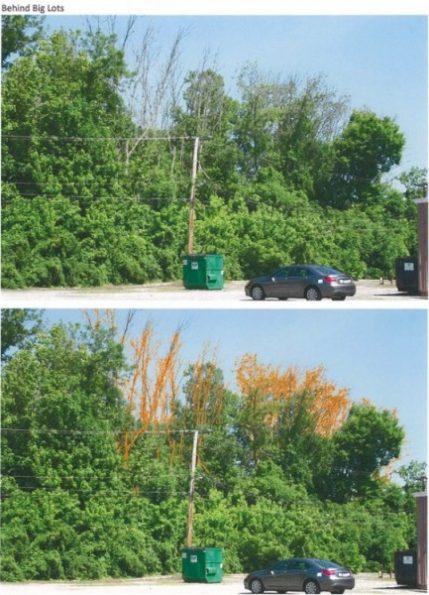
Leave a Reply